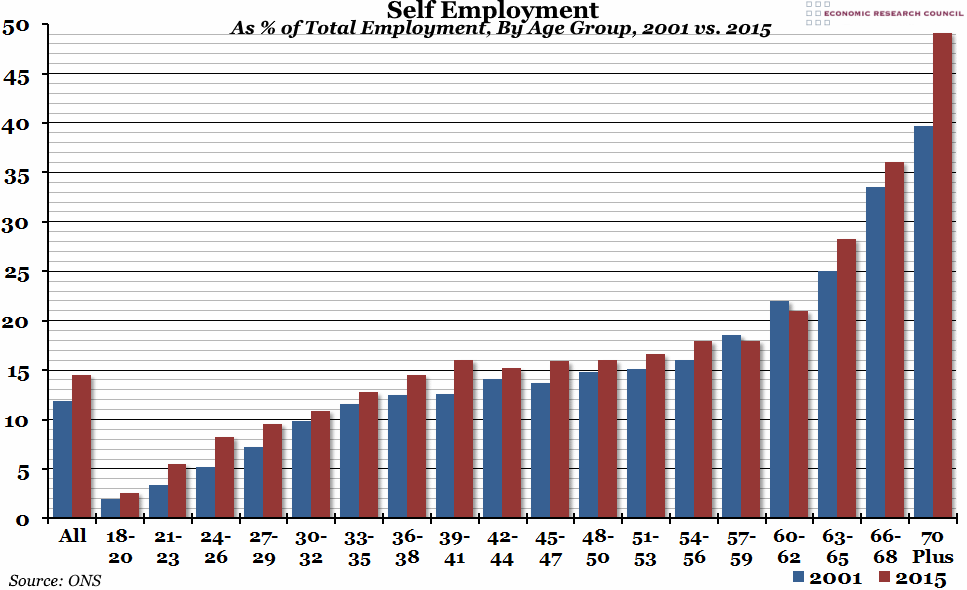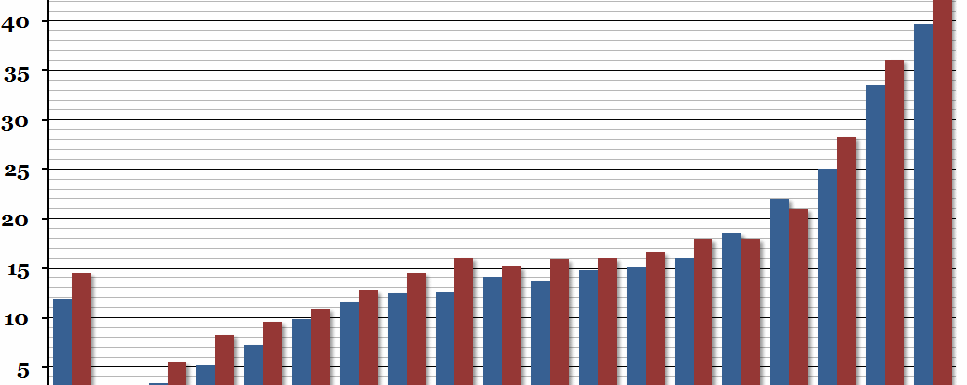
Summary
A report published by the ONS this morning highlighted the increasing role of self-employment in the UK’s labour market, but also pointed out that it is a long-term trend over the past 25 years, rather than a short-term reaction to the financial crisis. The age distribution of self-employed people helps to reveal some of the possible causes of this shift away from traditional employment.
What does the chart show?
The chart shows the percentage of the total number of people in employment who are self-employed in 2001 (the blue bars) and 2015 (the red bars), for the whole workforce on the far left hand side and then by age group.
Why is the chart interesting?
The total number of self-employed people in the UK increased from 3.4 million in 1993 to 4.7 million at the beginning of 2016; since 2001, self-employment as a proportion of all employment has grown from 11.9% to 14.5%. On this timescale, the effect of the financial crisis is barely noticeable, suggesting that what has often been thought of as a feature of the post-crisis labour market is really the culmination of a longer-term trend. Looking at the age distribution of self-employed people gives a hint as to what is behind this trend. The most obvious change over the 15 years shown on the graph is in the “70 plus” age category, where the proportion of self-employed people increased by almost ten percentage points to just under 50%. This suggests a change in the way older people handle retirement, perhaps using self-employment as a way to continue to engage with the labour market selectively, probably reflecting longer life expectancies and more opportunities for healthier older people.
However, the other group that has experienced a big increase in self-employment rates is the twenty-somethings. While they remain far less likely to be self-employed than the national average, self-employment has become a more important feature of the labour market for them than it was at the turn of the millennium. This could represent a greater feeling of freedom and flexibility, or it could represent greater uncertainty and job insecurity.

